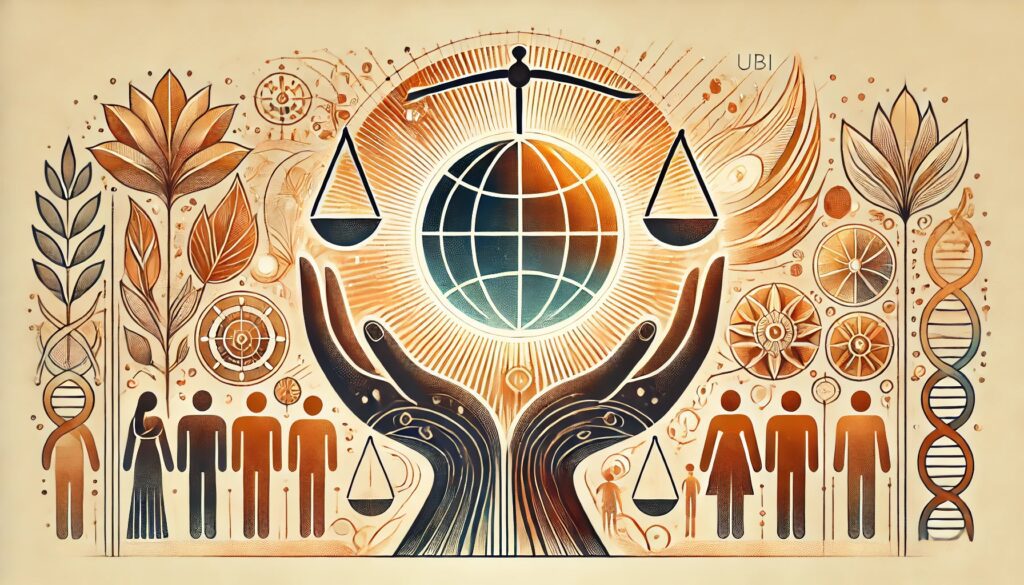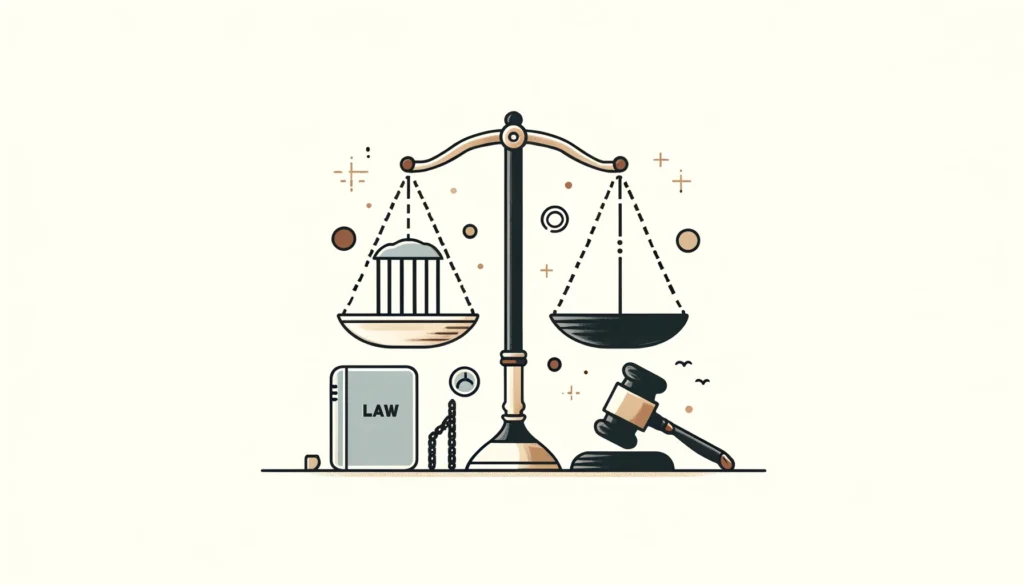
As Artificial Intelligence (AI) continues to advance, it touches nearly every aspect of our lives—from healthcare and finance to transportation and criminal justice. With these advancements comes an inevitable question: Who is responsible when AI systems make decisions that lead to harm? Understanding AI accountability is crucial, not only for developing fair and ethical AI systems but also for creating legal frameworks that ensure justice and protection for all parties involved.
The Foundations of AI Accountability
AI accountability is a multi-faceted issue that intersects with ethics, law, technology, and public policy. To fully grasp the complexities of who should be held accountable for AI’s actions, we must first understand the nature of AI systems themselves.
AI systems operate based on algorithms—sets of rules that process data to make decisions. These decisions can range from mundane tasks, like recommending products, to life-altering ones, like diagnosing diseases or sentencing in court. The increasing autonomy and sophistication of AI mean that these systems are no longer mere tools; they are becoming decision-makers with the potential to impact human lives profoundly.
The Role of Developers: Creating the Blueprint
Developers are the individuals or teams responsible for creating the algorithms that power AI systems. They design the architecture, select the training data, and fine-tune the model to achieve specific outcomes. However, AI systems, especially those based on machine learning, are not entirely predictable. They learn from data and can evolve in ways that developers might not anticipate.
Key responsibilities of developers include:
- Ensuring transparency: Developers should make AI systems as transparent as possible, allowing stakeholders to understand how decisions are made.
- Mitigating bias: AI systems can inherit biases present in their training data. Developers must actively work to identify and mitigate these biases to prevent unfair outcomes.
- Ethical design: Developers should adhere to ethical guidelines that prioritize fairness, privacy, and security.
Despite these responsibilities, the inherent complexity and unpredictability of AI raise significant challenges. Developers may not foresee every possible scenario in which their AI system could be used or every unintended consequence that might arise. This limits the extent to which developers alone can be held accountable.
The real problem is not whether machines think but whether men do
— B. F. Skinner
Companies: Deploying AI in the Real World
Companies play a crucial role in bringing AI systems from the lab to the real world. They decide how AI will be integrated into products and services, often prioritizing profitability and efficiency. This commercial deployment introduces a new layer of responsibility.
Corporate accountability involves:
- Ensuring compliance: Companies must ensure that AI systems comply with relevant laws and regulations, including those related to data protection, discrimination, and consumer rights.
- Risk management: Companies should assess and manage the risks associated with AI deployment, including the potential for harm to users or the public.
- Transparency and disclosure: Companies must be transparent about how AI systems are used, especially in high-stakes areas like finance, healthcare, and law enforcement.
When AI systems cause harm—whether through biased hiring algorithms, faulty credit scoring, or misleading medical diagnoses—companies often face public scrutiny and legal challenges. However, the question remains: To what extent should companies be held liable for the actions of AI systems that operate autonomously?
Users: Navigating the AI-Driven World
Users interact with AI systems in various capacities, from consumers using AI-powered apps to professionals relying on AI in their work. The role of users in AI accountability is complex, as it involves both individual responsibility and systemic factors.
Key considerations for users include:
- Informed usage: Users should be aware of the limitations and potential biases of AI systems and exercise critical judgment when relying on AI-driven decisions.
- Feedback mechanisms: Users should have avenues to provide feedback or raise concerns about AI systems, especially if they experience harm or unfair treatment.
- Shared responsibility: Users, particularly in professional contexts, share responsibility with developers and companies for ensuring that AI is used ethically and effectively.
For instance, a doctor using an AI tool for diagnosis should not blindly trust the AI but should instead consider the AI’s recommendation alongside their professional expertise. This raises the question: If the AI makes a mistake, and the doctor fails to catch it, who is accountable? The line between human and machine responsibility becomes blurred.
The AI Itself: A New Paradigm of Responsibility?
As AI systems become more autonomous, some argue that we might need to consider the possibility of assigning responsibility to the AI itself. This is a radical idea that challenges traditional notions of accountability, which are typically rooted in human agency and intention.
Key arguments for AI responsibility include:
- Autonomy: If an AI system operates independently and makes decisions without human intervention, should it be treated as an agent capable of bearing responsibility?
- Decision-making capacity: Some advanced AI systems can make complex decisions based on vast amounts of data. If these decisions lead to harm, does it make sense to hold the AI accountable?
- Legal personhood: There is ongoing debate about whether AI should be granted some form of legal personhood, similar to corporations, which could allow them to be held accountable in a limited way.
However, assigning responsibility to AI is fraught with challenges. AI lacks consciousness, intention, and moral understanding—all qualities traditionally associated with accountability. Moreover, current legal frameworks are ill-equipped to address this notion, and there is significant resistance to the idea from both legal scholars and ethicists.

Legal Precedents: Navigating Uncharted Waters
Legal systems around the world are beginning to confront the challenges of AI accountability. As AI becomes more integrated into critical aspects of society, courts and lawmakers are being forced to address who should be held accountable when things go wrong.
Notable legal cases and precedents include:
- Autonomous vehicles: When an autonomous vehicle causes an accident, the question of liability is complex. Courts must consider whether the fault lies with the vehicle manufacturer, the software developer, or even the user who was supposed to supervise the vehicle’s operation.
- AI in healthcare: In cases where AI-driven diagnostic tools lead to misdiagnosis or incorrect treatment, the legal system must determine whether the responsibility lies with the developers, the healthcare provider, or the AI itself.
- Discriminatory algorithms: There have been several legal challenges related to AI systems that produce biased outcomes, particularly in hiring and criminal justice. Courts are beginning to hold companies accountable for the discriminatory effects of their AI systems, but the standards for proving such cases are still evolving.
These cases highlight the ambiguity and complexity of AI accountability in the legal realm. As AI technology continues to advance, there is a growing need for clear legal frameworks that address the unique challenges posed by AI systems.
Accountability is the glue that ties commitment to the result.
— Bob Proctor
The Role of Regulation: Shaping the Future of AI Accountability
As AI becomes more ubiquitous, regulation will play a critical role in ensuring that AI systems are developed and deployed responsibly. Governments and international bodies are beginning to recognize the need for AI-specific regulations that address accountability, transparency, and fairness.
Key regulatory developments include:
- The European Union’s AI Act: The EU is leading the way with its proposed AI Act, which seeks to regulate AI systems based on their potential risk to society. The Act proposes stringent requirements for high-risk AI systems, including transparency, accountability, and human oversight.
- National AI strategies: Several countries, including the United States, China, and Canada, have developed national AI strategies that emphasize the importance of ethical AI development and accountability.
- AI ethics guidelines: In addition to formal regulations, there are numerous efforts to establish AI ethics guidelines that outline best practices for AI developers and companies. These guidelines often emphasize the importance of transparency, fairness, and accountability.
AI Accountability: Real-World Case Studies
To better understand the complexities of AI accountability, let’s dive into several real-world case studies. These examples illustrate the challenges and implications of holding various parties responsible when AI systems cause harm or operate in ways that are unexpected.
Case Study 1: Autonomous Vehicles and the Death of Elaine Herzberg
Background:
On March 18, 2018, Elaine Herzberg was struck and killed by an autonomous Uber vehicle in Tempe, Arizona. The vehicle was in self-driving mode at the time of the accident, with a safety driver behind the wheel. This tragic incident raised significant questions about accountability in the context of autonomous vehicles.
Key Issues:
- Developer responsibility: The AI system powering the vehicle failed to correctly identify Herzberg as a pedestrian and thus did not initiate a braking maneuver. The developers of the AI system faced scrutiny for creating an algorithm that was not fully reliable in real-world scenarios.
- Company responsibility: Uber, the company that deployed the autonomous vehicle, was criticized for inadequate testing and oversight of the self-driving system. The company had reportedly disabled the vehicle’s emergency braking system to reduce erratic behavior during testing.
- User responsibility: The safety driver, who was supposed to monitor the vehicle’s operation, was found to be distracted at the time of the accident, watching a video on their phone. This raised questions about the responsibility of human supervisors in semi-autonomous systems.
Outcome:
Following an investigation, Uber reached a settlement with Herzberg’s family. The case highlighted the ambiguity in accountability for autonomous vehicle incidents and spurred discussions about the need for clear regulations and safety standards in the deployment of such technologies.
Case Study 2: COMPAS and Algorithmic Bias in Criminal Justice
Background:
The Correctional Offender Management Profiling for Alternative Sanctions (COMPAS) is an AI tool used in the United States to assess the risk of recidivism in defendants. The system is employed by courts to inform sentencing decisions. However, in 2016, an investigation by ProPublica revealed that COMPAS was biased against African Americans, incorrectly labeling them as high-risk more often than white defendants.
Key Issues:
- Developer responsibility: The developers of COMPAS, Northpointe (now Equivant), faced criticism for creating an algorithm that exhibited racial bias. Despite claims that the system was race-neutral, the bias emerged from the data used to train the algorithm and the way the risk factors were weighted.
- Company responsibility: The company refused to disclose the inner workings of the algorithm, citing proprietary concerns. This lack of transparency hindered public scrutiny and legal challenges, raising ethical questions about the use of black-box AI systems in critical areas like criminal justice.
- Legal system responsibility: Courts using COMPAS were accused of relying too heavily on the AI system without fully understanding its limitations. This reliance potentially led to unjust sentencing, with significant consequences for the lives of those affected.
Outcome:
The revelations about COMPAS’s bias led to widespread debate about the use of AI in criminal justice. While some jurisdictions have reconsidered their use of such tools, the case highlighted the need for greater transparency, accountability, and regulation in AI systems, particularly those used in sensitive areas like law enforcement.
Case Study 3: Apple Card and Gender Bias in Credit Decisions
Background:
In 2019, several high-profile individuals, including Apple co-founder Steve Wozniak, raised concerns that the Apple Card, issued by Goldman Sachs, was discriminating against women by offering them lower credit limits than their male counterparts, even when the financial situations of both parties were similar.
Key Issues:
- Algorithmic bias: The AI algorithms used by Goldman Sachs to determine credit limits were accused of being biased against women. This led to public outcry and accusations of discrimination, despite the company’s insistence that gender was not explicitly used as a criterion in the decision-making process.
- Corporate responsibility: Goldman Sachs faced criticism for not adequately testing its algorithms for gender bias and for the lack of transparency in how credit limits were determined. The incident highlighted the importance of fairness and equity in AI-driven financial decisions.
- Regulatory response: The incident drew the attention of regulators, including the New York Department of Financial Services (NYDFS), which launched an investigation into the company’s practices. The case underscored the growing need for regulatory oversight in the use of AI in the financial sector.
Outcome:
While Goldman Sachs denied any wrongdoing, the case prompted a broader discussion about algorithmic fairness and the need for more rigorous testing and transparency in AI systems used in finance. It also spurred calls for regulations that ensure AI systems do not inadvertently perpetuate societal biases.
Case Study 4: Amazon’s AI Recruiting Tool and Gender Discrimination
Background:
In 2018, it was revealed that Amazon had been using an AI recruiting tool that discriminated against women. The AI system, designed to review resumes and recommend candidates for technical roles, was found to downgrade resumes that included terms like “women’s” as in “women’s chess club captain” or similar phrases, and prioritize resumes that featured traditionally male-dominated roles and terms.
Key Issues:
- Bias in training data: The AI system was trained on resumes submitted to Amazon over a 10-year period, most of which came from men. As a result, the system learned to favor resumes that resembled those of male candidates, perpetuating existing gender biases in the hiring process.
- Developer responsibility: The developers were responsible for the creation and deployment of the AI system but failed to adequately account for the potential for bias in the training data. This case highlights the importance of inclusive and representative data in AI training.
- Corporate responsibility: Amazon faced backlash for its lack of oversight and for not identifying the bias before the tool was deployed. The company eventually scrapped the project after it became clear that the AI was not making unbiased decisions.
Outcome:
This case served as a cautionary tale about the risks of using AI in hiring and recruitment, especially when the AI systems are trained on biased data. It also highlighted the need for human oversight in AI-driven processes and the potential dangers of relying too heavily on automated systems for critical decisions.
Case Study 5: Google Photos and Racial Misidentification
Background:
In 2015, Google Photos came under fire when its image recognition AI mistakenly tagged photos of black people as “gorillas.” The incident was widely condemned as an example of the racial bias that can be present in AI systems, particularly those involved in image recognition and classification.
Key Issues:
- Algorithmic failure: The AI system was trained on a dataset that was not sufficiently diverse, leading to gross misidentifications. The failure to accurately recognize and classify images of people of color pointed to significant flaws in both the training data and the algorithms used.
- Developer responsibility: Google’s developers were criticized for not thoroughly testing the AI system on a diverse set of images before releasing it to the public. This oversight demonstrated the importance of diversity in AI training datasets and the need for rigorous testing.
- Corporate responsibility: Google took immediate steps to address the issue, including apologizing publicly and implementing fixes to prevent similar incidents in the future. However, the incident highlighted broader concerns about racial bias in AI and the potential harm caused by such biases when they go unaddressed.
Outcome:
The incident prompted widespread discussion about the ethical responsibilities of companies developing AI systems, particularly in terms of ensuring that these systems do not perpetuate harmful stereotypes or biases. Google’s response, which included significant changes to its AI development practices, underscored the importance of accountability in AI technology.
Learning from Case Studies
These case studies illustrate the diverse challenges of AI accountability across various sectors, from transportation and criminal justice to finance and hiring. Each case highlights the importance of responsibility at multiple levels—developers, companies, users, and even the AI systems themselves.
As AI technology continues to evolve, it is crucial to learn from these real-world examples and implement robust frameworks that ensure transparency, fairness, and accountability. By doing so, we can harness the power of AI while minimizing the risks and ensuring that it serves the greater good.
For further reading on the legal implications, ethical considerations, and future directions in AI accountability, please explore the following resources.
Future Directions: A Shared Approach to Accountability
Given the complexities of AI accountability, a shared approach that involves multiple stakeholders is likely the most effective way forward. This approach would distribute responsibility across developers, companies, users, and regulators, ensuring that all parties play a role in minimizing harm and maximizing the benefits of AI.
Key elements of a shared approach include:
- Collaborative regulation: Governments, industry, and civil society should work together to develop regulations that address the unique challenges of AI accountability. This collaboration should aim to balance innovation with the need for safety and fairness.
- Ethical AI design: Developers should prioritize ethical considerations in the design of AI systems, ensuring that these systems are transparent, fair, and accountable from the outset.
- Corporate responsibility: Companies should implement robust governance frameworks that ensure AI systems are used responsibly and that any harms are promptly addressed.
- User education: Users, both professionals and consumers, should be educated about the limitations and risks of AI systems, empowering them to use AI responsibly.
Conclusion: Navigating the Complex Terrain of AI Accountability
The issue of AI accountability is not easily resolved. It requires a nuanced understanding of technology, ethics, law, and human behavior. As AI continues to advance, society must develop robust frameworks that address the challenges of accountability, ensuring that the benefits of AI are realized while minimizing the risks.
In the end, AI accountability is likely to be a shared responsibility, involving developers, companies, users, and regulators. By working together, we can create a future where AI systems are not only powerful and innovative but also fair, transparent, and accountable.
Further Reading on AI Accountability
Here are some valuable resources that delve deeper into the legal, ethical, and technical aspects of AI accountability:
Books
- “Artificial Intelligence: A Guide for Thinking Humans” by Melanie Mitchell
- This book provides a comprehensive overview of AI, its capabilities, and its limitations, with a focus on understanding the ethical and social implications of AI systems.
- “Weapons of Math Destruction” by Cathy O’Neil
- O’Neil explores how big data and AI algorithms can reinforce discrimination and inequality, making a strong case for the need for accountability in AI systems.
- “Ethics of Artificial Intelligence and Robotics” edited by Vincent C. Müller
- This collection of essays examines the ethical challenges posed by AI and robotics, offering insights into the responsibilities of developers, companies, and governments.
Academic Papers
- “The Role of AI in Society: The Legal, Ethical, and Policy Challenges” by Virginia Dignum
- This paper explores the broader societal impact of AI and discusses the legal and ethical challenges associated with AI accountability.
- “Accountability in AI Development: The Necessity of Informed, Ethical AI” by Shannon Vallor
- Vallor discusses the importance of integrating ethical considerations into AI development and the role of developers in ensuring AI accountability.
- “AI Bias and the Law: Challenges and Opportunities” by Sandra Wachter and Brent Mittelstadt
- This paper examines the legal challenges associated with AI bias and the potential regulatory frameworks that could address these issues.
Reports
- “The European Commission’s Ethics Guidelines for Trustworthy AI”
- These guidelines provide a framework for developing AI systems that are ethical, transparent, and accountable, offering practical recommendations for developers and companies.
- “AI Now Institute 2020 Report”
- The AI Now Institute’s annual report discusses the latest trends in AI, with a focus on accountability, bias, and the social impact of AI technologies.
- “Artificial Intelligence and Accountability: A Primer” by the Information Commissioner’s Office (ICO)
- This report from the UK’s ICO provides an overview of the legal and ethical considerations related to AI accountability, with practical advice for organizations deploying AI systems.
Websites and Blogs
- “AI Ethics Lab” (https://aiethicslab.com/)
- A resource hub for discussions on AI ethics, including articles, research, and tools for understanding and addressing AI accountability issues.
- “Future of Life Institute” (https://futureoflife.org/ai/)
- This organization focuses on mitigating existential risks from AI, including ethical and accountability challenges.
- “AI Now Institute” (https://ainowinstitute.org/)
- A leading research institute focused on the social implications of AI, offering in-depth analysis and reports on AI accountability, fairness, and ethics.
Podcasts
- “The AI Alignment Podcast”
- Hosted by the Future of Life Institute, this podcast features experts discussing the alignment of AI with human values, including the challenges of accountability.
- “AI and the Future of Work”
- This podcast explores the impact of AI on the workplace, including discussions on responsibility and ethical AI practices.
- “Data Skeptic”
- This podcast covers topics related to data science, AI, and machine learning, often discussing the ethical implications and the importance of accountability in AI systems.
These resources will provide you with a deeper understanding of the complexities surrounding AI accountability and offer insights into how different stakeholders can address these challenges.





